Inspecting the Camshafts for Unusual Wear
Some Elises appear to have suffered from Toyota camshafts with improper hardening. It's a 10 minute job to pull the camshaft cover off, so I took some photos
to serve as a baseline for future inspections. The cams are coated from the factory and some of the cam lobes still display the gray coating.
Notes on the Lotus Camshaft Issue
The information below was gathered from numerous posts on LotusTalk, LotusSport, and other internet sources.
Problem Identification
A cam lobe may have failed if one or more of the following symptoms is present
- The car has an ignition miss (runs rough)
- The car is running in "limp-in" mode
- There is an easily heard and unusual noise coming from the top of the engine under the valve cover
- You have one of the following check engine light codes
- these codes don't indicate a cam failure, but these codes appear to be correlated with cam lobe failures -
- P1302 - Misfire level causing catalyst system damage (most common)
- P0302 - Cylinder 2 Misfire Detected
- P0303 - Cylinder 3 Misfire Detected (most common)
- P0304 - Cylinder 4 Misfire Detected
Observations
- Improper cam wear starts before any check engine light (CEL) is illuminated on the gauge cluster
- The result of improper cam lobe wear is cam lobe damage
- The eventual outcome associated with cam lobe damage is rocker arm breakage
- The high speed cam lobe is typically involved
- The high speed cam lobe does not use a roller, but instead slides on the cam lobe
- The number 3 cylinder is most commonly affected
- The number 3 cylinder oil sprayer has a sub-optimal spray pattern
- Toyota Celica GTS cars have the same engine, but do not have the same problem
Parts to Replace
- Buy a new cam and followers
- New rockers since the rockers wear into the high speed cams
- Monkey Wrench Racing has a new upgraded rocker assembly.
- Visually inspect the top of the intake valve for wear
- Conduct a compression check to detect valve condition
- Valve stem lash caps to adjust the valves
- High pressure lubricant additive for break-in
- Gaskets
Rough Repair Procedure
- Rotate the engine so that both orange timing marks are up
- Mark where they contact the timing gears
- Slide the belt tensioner out a touch to garner access to the timing chain tensioner
- Remove the belt and unscrew the big tensioner pivot bolt (it won't come out all the way because the frame is in the way) to allow the tensioner assembly to slide to the side a bit
- Remove all the bolt securing the intake cam
- Remove the exhaust cam gear and get the timing chain (TC) away from the sprockets
- Keep tension on the TC and zip tie it to the intake or similar so that it remains in contact with the crank timing gear
- Remove the intake cam
- Swap the phaser onto the new cam. Follow Toyota service procedure for the phaser timing operation
- Remove the valve assembly on the drivers side of the head
- Careful, there's a filter in the head when you pull that off. Remove it and clean it.
- Remove the intake rocker shaft retaining bolt (on the pass side of the head at 12 o'clock, 10mm head)
- Remove the coolant overflow tank
- Slide the rocker shaft nearly out of the head to release all the rockers
- Replace rockers with the new ones and slide shaft back in as you go. Work from the driver's side and move to the pass side
- Lube the rockers with assembly lube
- Install the new cam with phaser and coat it with assembly lube
- Reverse the removal steps
- DTC P0012 after cam replacement? and here is what you did wrong
Potential Root Causes
The root cause is still unknown, because the manufacturer does not recognize the problem.
- Sticking valves causing rocker arm breakage from too low oil temperature
- There is an ECU flash available from Lotus that prevents high lift cam engagement until the engine is at 80C or about 176F
- Oil sprayer over number 3 cylinder spraying sub-optimally
- While this problem has been shown to exist, the sprayers are so close to the cams that it seems unlikely to be a root cause
- Lotus set the maximum engine speed too high
- Improper hardening of the camshafts from Toyota
- Improperly offset lifters or overly-centered lifters
- Lotus owners spend more time driving the cars on the high cam lobe
- The factory lash spec on the intake valves is too tight for cars that are revved high consistently
- They need to be set to 0.010" between the valve and rocker, which is the maximum end of the stock spec. The valves grow too much under high temp and speed to set it any looser.
Prevention
- Use a high quality synthetic oil
- Make sure that the engine oil is sufficiently warm before using the high speed cams (> 80 C/176 F)
- The indicated water temperature can be greater than 80C, but oil temperature can still be below 60C
VVT Operation (DTC P0012)
The VVT system on the intake camshaft can vary the timing by approximately 25°. The camshaft relative position is varied by a system of vanes mounted on
the drive end of the camshaft. The VVT oil control valve modulates a spool valve position in accordance with the drive signal duty cycle, this in turns
controls the oil pressure applied to the vanes. A 50% duty cycle applied to the valve will hold the valve current timing by preventing oil flow from the
VVT controller housing, a duty cycle less than 50% will retard the valve timing, a duty cycle greater then 50% will advance the valve timing.
Potential failure modes:
• Static valve timing is incorrect
• VVT camshaft actuator failure
• VVT valve stuck open / closed
• You just replaced your camshaft
Click on any image to view a higher resolution version.

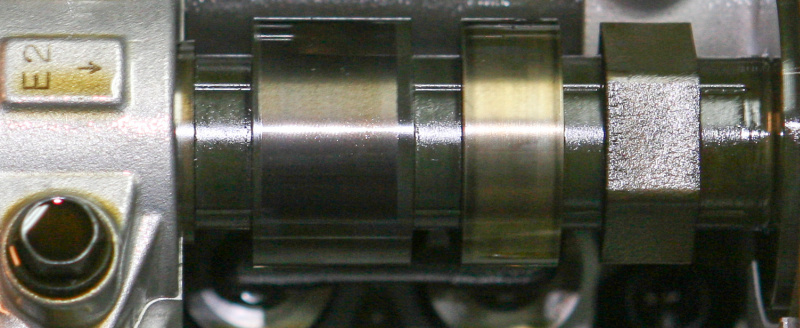
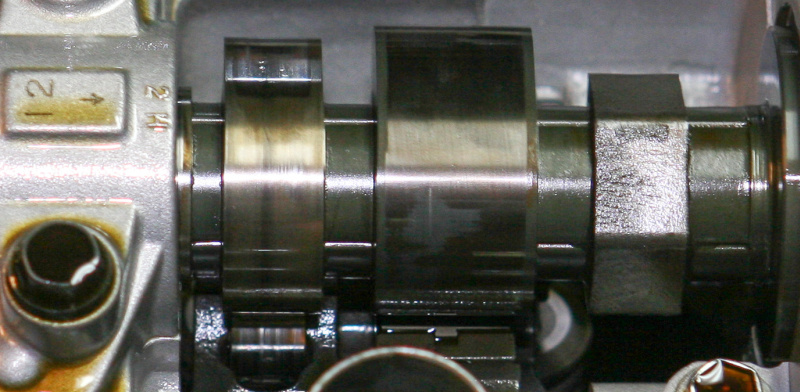
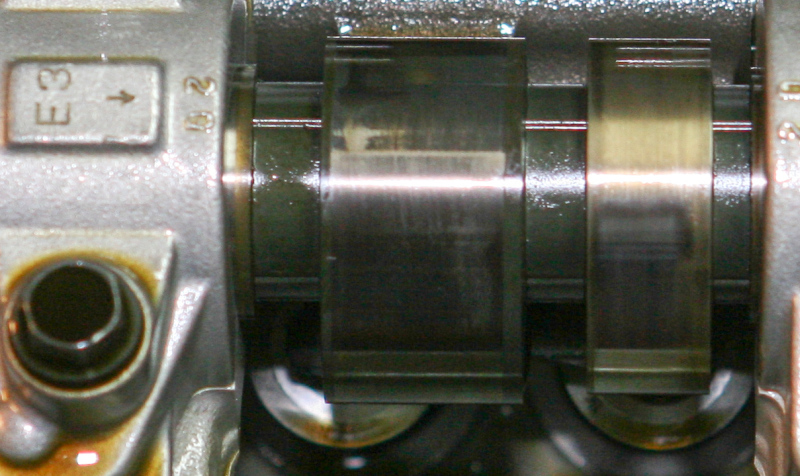
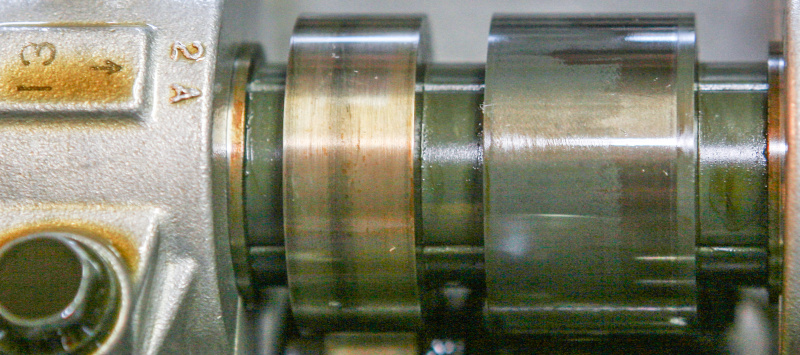
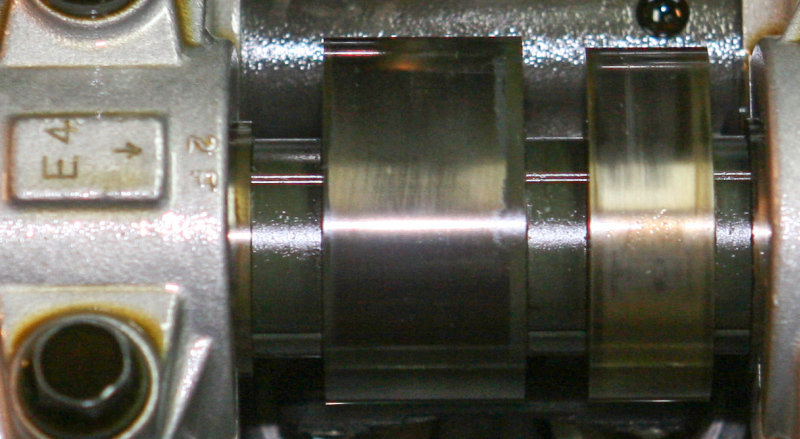
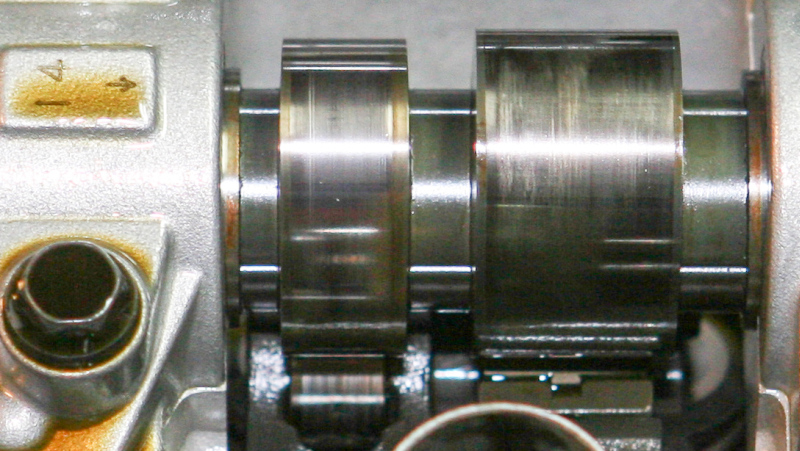
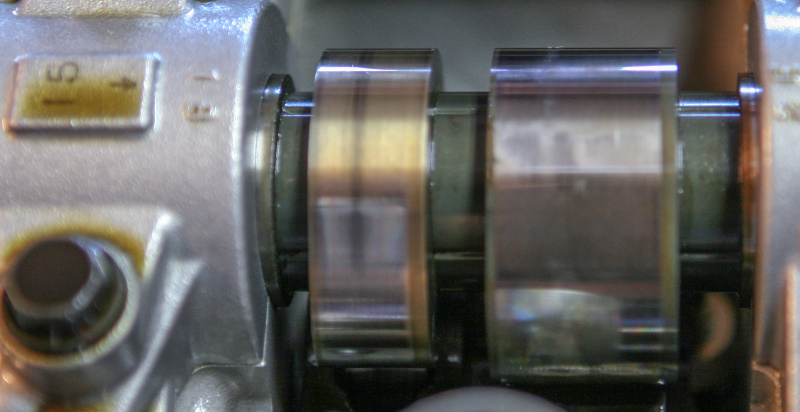
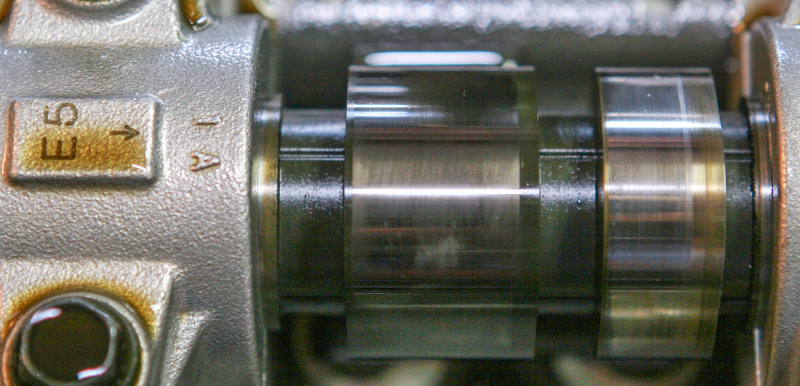 Last update: Dec 7th, 2019
Last update: Dec 7th, 2019










